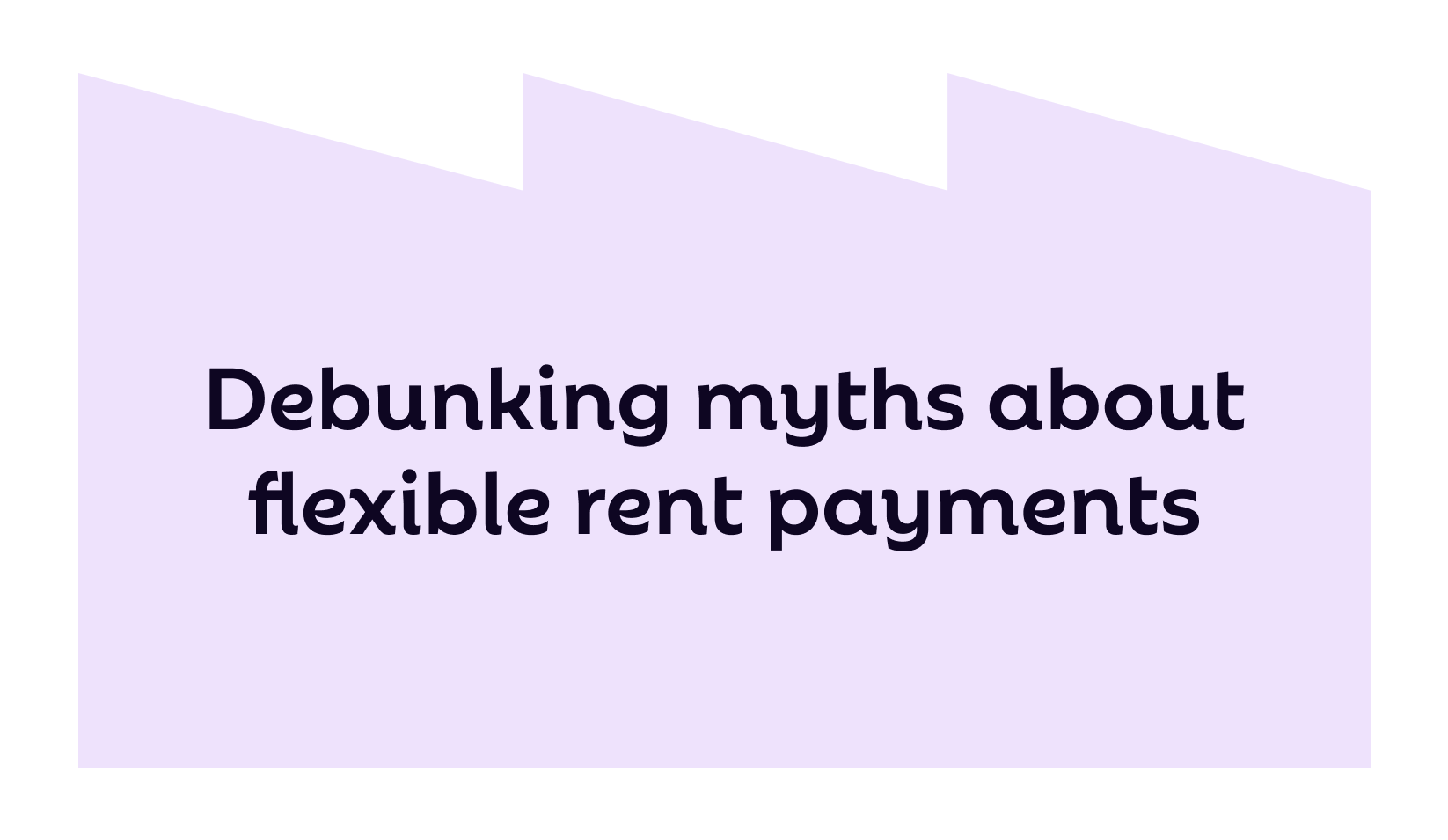Introduction
Think flexible rent payments are just another debt trap? Or that they encourage bad financial habits? Think again.
Flexible rent payments are gaining traction as a game-changer for renters and property managers alike. But as with any new financial solution, misconceptions and myths can create hesitation.
Some people worry that flexible rent payments encourage bad financial habits, while others think it’s just another form of debt. Property managers might wonder if it will disrupt their cash flow or increase delinquencies.
So, let’s set the record straight. In this post, we’ll debunk the most common myths about flexible rent payments and explain why this solution is a win-win for both renters and property managers.
Myth #1: “Flexible Rent Payments Are Just Another Debt Trap”
Reality: Flex Has Consumer Safeguards to Prevent Debt Traps
Unlike credit cards or payday loans, Flex does not compound or defer interest. Instead, we allow renters to split their rent into smaller, more manageable payments for a small fee that align with their income.
✔ No high-interest rates
✔ No revolving debt
✔ No compounding interest
✔ No late fees
✔ No loan stacking
For example, rather than struggling to pay a $1,500 rent bill all at once, a renter could pay $750 upfront and $750 later when their next paycheck arrives. They still pay the full rent amount—just on a schedule that works for them.
Myth #2: “Flexible Rent Payments Encourage Irresponsible Spending”
Reality: Flexible Rent Payments Promote Better Financial Planning
This myth assumes that if renters aren’t forced to pay rent all at once, they’ll waste their money elsewhere. But studies show the opposite:
📊 76.8% of renters using flexible rent payments reported that it helped them better manage their finances and pay bills on time.
📉 92.3% of users said it positively impacted their long-term financial health.
For renters living paycheck to paycheck, the first of the month can be a source of anxiety. A single unexpected expense—a car repair, a medical bill—can mean the difference between paying rent on time or racking up costly fees.
By aligning rent with income cycles, flexible rent payments help renters:
✅ Avoid late fees and overdraft penalties.
✅ Budget more effectively throughout the month.
✅ Prevent falling behind on rent due to bad timing.
Financial flexibility isn’t about avoiding rent—it’s about making it more manageable.
Myth #3: “Property Managers Will Lose Money or See More Late Payments”
Reality: Property Managers Benefit from More Consistent Payments
Some property managers worry that allowing flexible rent schedules will lead to more delinquencies or financial uncertainty. But the data tells a different story:
📈 Property managers offering flexible rent options see:
✔ More on-time payments 📅
✔ Lower eviction rates 🚪
✔ Improved tenant retention 🏠
A 2024 property management study found that flexible rent payments reduced missed payments by 20%, helping landlords maintain more predictable cash flow.
Considering that the average eviction costs landlords $3,500–$10,000 in lost rent, legal fees, and turnover costs, flexible rent payments provide a much more sustainable solution to keep tenants current.
Instead of relying on late fees and evictions, property managers can keep good tenants while ensuring steady rental income.
Myth #4: “Flexible Rent Payments Are Too Complicated”
Reality: It’s a Simple, Automated Process
Some renters and property managers worry that adjusting rent schedules will create unnecessary complexity. But modern flexible rent payment solutions are fully automated.
💡 How It Works:
1️⃣ The renter signs up and chooses a payment plan that aligns with their income.
2️⃣ The system automatically schedules payments, ensuring landlords receive rent on time.
3️⃣ No extra paperwork or manual tracking—everything is managed through an easy-to-use platform.
For property managers, it’s as simple as collecting rent the old way—just with fewer missed payments.
Myth #5: “It’s Too Expensive for Renters”
Reality: Flexible Rent Payments Save Renters Money
Some people assume that rent flexibility comes with high fees—but in reality, flexible rent payments help renters avoid even bigger costs like:
💰 Late rent fees: $81–$162 per missed payment
💳 Overdraft fees: $35 per occurrence
💸 Credit card late fees: $30–$41 per bill
📌 77.46% of renters using flexible rent payments reported that it saved them money.
Instead of paying hundreds in penalties, renters pay a small, transparent fee to keep their finances on track.
Final Thoughts: Flexible Rent Payments Are the Future
🚀 Flexible rent payments are a smarter way to pay rent that reflects how people actually earn money.
✅ They reduce financial stress for renters.
✅ They improve cash flow for property managers.
✅ They prevent unnecessary late fees and evictions.
📄 Get the Full Report
📄 Breaking the Fee Cycle: How Flexible Rent Payments Improve Financial Stability and Housing Security
📩 Sign up here 👉 https://getflex.com/newsletter to get updates from Flex—straight to your inbox!



